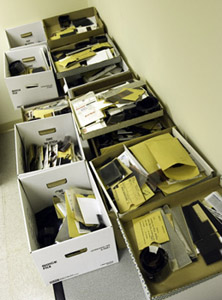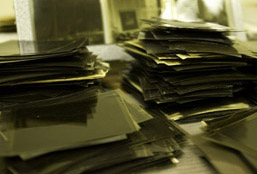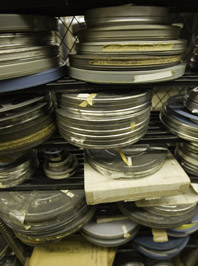

These views of our work areas give some idea of what it is like to process a collection as large, varied, and disorderly as the Morton photos. Since I began working on the collection two months ago, I have had regular moments of crisis during which I become nearly paralyzed by all the challenges associated with and possible approaches to this project. How do you impose order on chaos, while respecting what few pockets of order do exist? How do you decide what to digitize, and when? How do you balance the needs and interests of the many people who will use this collection with the preservation needs of the material itself?
I usually manage to calm myself with a few simple mantras:
1) In essence, all I am doing is taking one huge pile of stuff, sorting it into smaller piles, sorting those piles into smaller piles, then sorting those piles, and on and on into infinity (OK, I exaggerate) – and, finally, describing the piles. That doesn’t sound so bad . . . right?
2) By documenting carefully and making smart use of descriptive tools, we can ultimately provide access to the collection in a variety of ways – through a traditional archival finding aid, through digital images, by subject, by date, by format, etc. – offering lots of options. Then, once the collection is available, we can listen to what actual users have to say and incorporate their suggestions.

3) I will never get bored at this job. Hugh Morton crammed more into a given month than most of us do in a lifetime, e.g., saving lighthouses, fighting air pollution, attending countless sporting and political events, hanging out with celebrities, bears, and cougars, and still finding time to enjoy the really important stuff – his family and friends. I’m lucky to have this opportunity to learn from and get to know him through the images he created.
